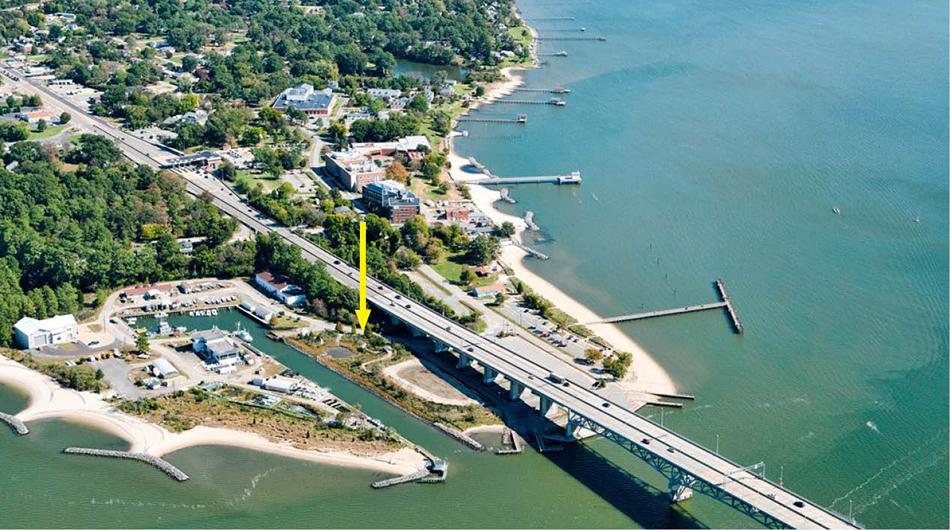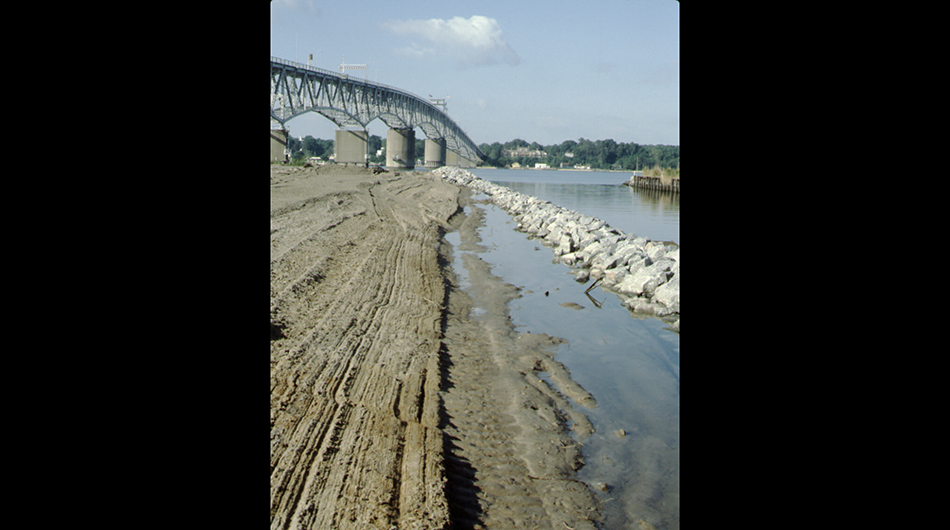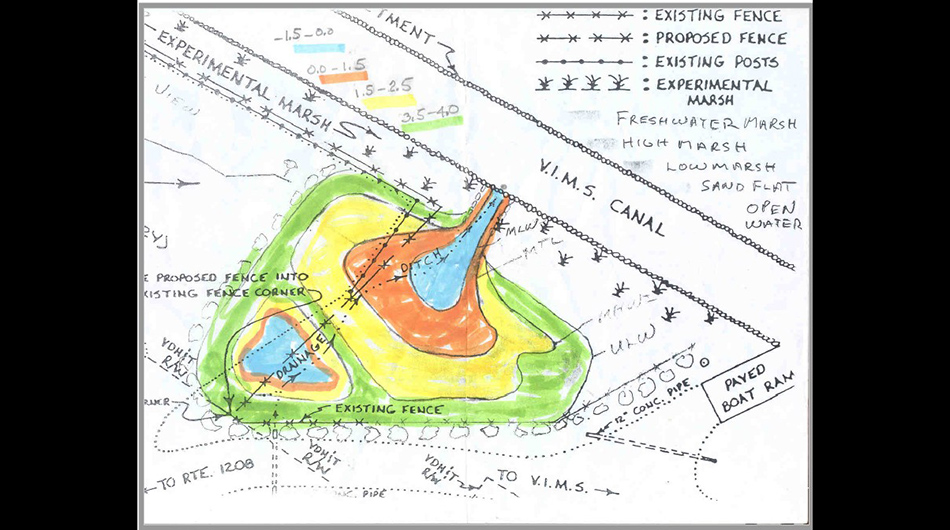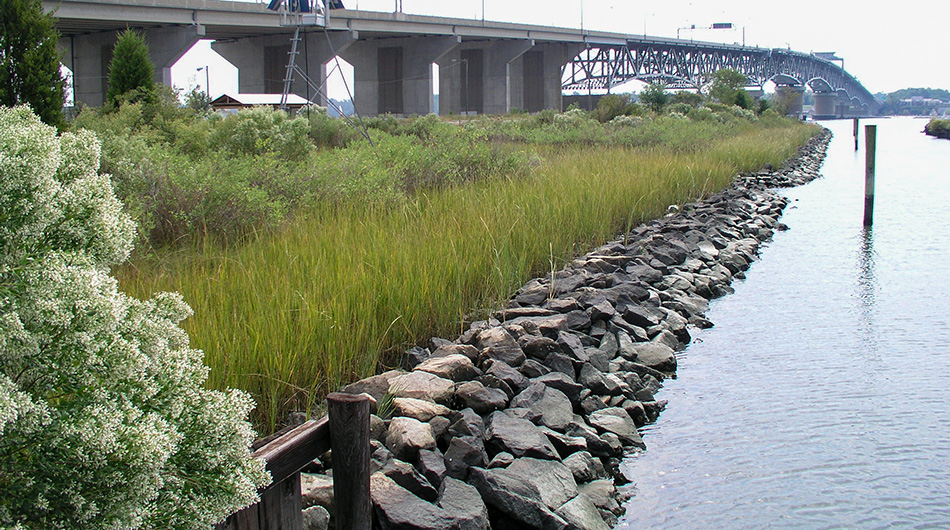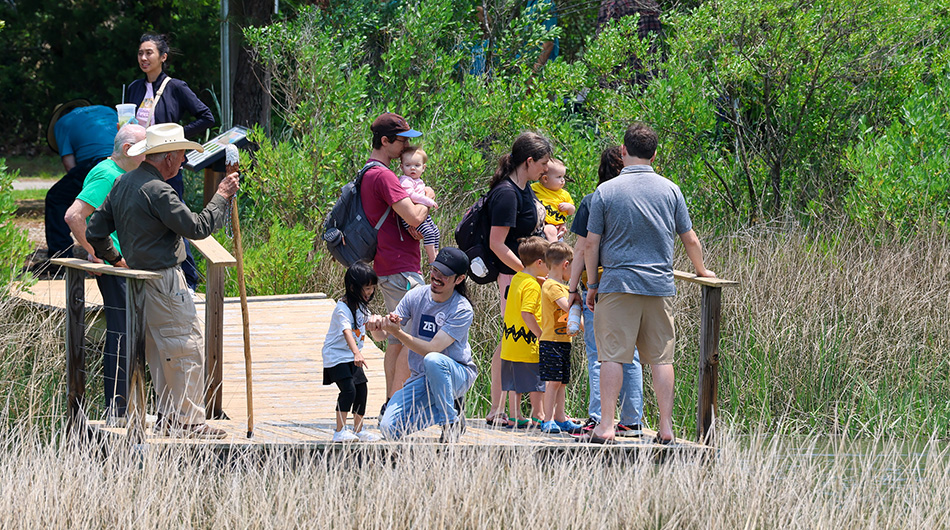Celebrating 25 years of the Teaching Marsh: A living laboratory for learning and resilience
The public is invited to join a special After Hours lecture celebrating the anniversary of the Carl Hershner Teaching Marsh on August 21 at William & Mary’s Batten School & VIMS
Tucked beneath the Coleman Bridge at the edge of William & Mary’s Batten School & VIMS campus lies a small but mighty salt marsh that has played an outsized role in advancing science education, environmental stewardship and coastal resilience. The Carl Hershner Teaching Marsh, named in honor of the Center for Coastal Resources Management’s (CCRM) founding director, has evolved over 25 years from a filled-in wetland to a thriving outdoor classroom and living laboratory.
On Thursday, August 21 at 7 p.m., Marine Scientist Karen Duhring will share the history and significance of this unique site as part of After Hours, an ongoing lecture series at the Batten School of Coastal & Marine Sciences & VIMS. The After Hours lecture on the Teaching Marsh is free and open to the public.
“The Teaching Marsh is a success story that continues to evolve,” said Duhring, who has been the caretaker of the marsh for nearly its entire existence. “It’s been a model for nature-based shoreline practices and a powerful educational resource for decades.”
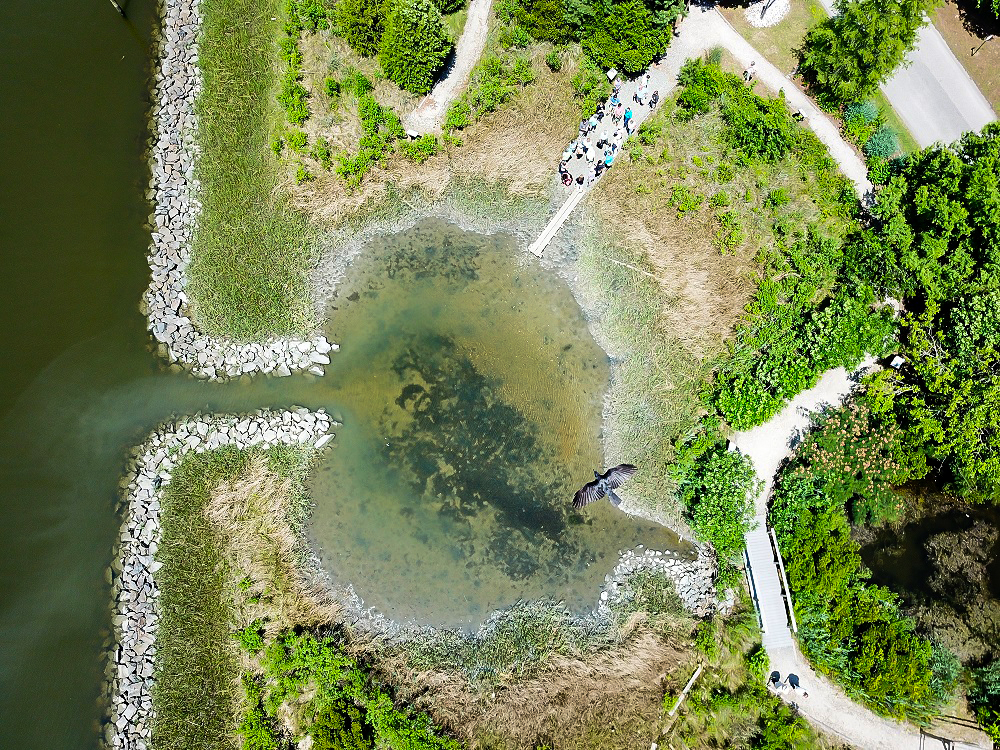 A marsh reclaimed, a vision accomplished
A marsh reclaimed, a vision accomplished
Long before the marsh became a beacon of environmental education, the site had been heavily altered, recalled Duhring. “Historic maps show a salt marsh at this location. Then, a commercial business that was operating at what is now the VIMS boat basin dug a canal for boat access and filled the marsh with the dredge material.”
The Batten School & VIMS purchased the property and eventually had to consider options for replacing a failing bulkhead along the canal. The concept of a “living shoreline” was new at the time, and Hershner had an innovative idea: replace the deteriorating bulkhead with a nature-based solution.
The first phase of the Teaching Marsh was completed in 1984 with a planted marsh and stone sill along the east side of the canal. In 1999, the site underwent another major transformation, with an acre excavated to remove fill material and restore saltmarsh elevations followed by the planting of native saltmarsh vegetation.
From the start, the marsh served both practical and educational purposes. The Batten School & VIMS needed a designated site to manage dredged material from the adjacent canal, and the soil excavated during marsh construction was used to build containment berms nearby. The restored salt marsh also serves as a water management feature for the lower portion of the campus, providing a place for water flow and storage during extreme tides and flooding events. At the same time, the site became a hands-on training ground for shoreline management workshops.
“We had been using kiddie pools to teach wetland plant identification and taking groups to remote field locations for training,” said Duhring, referencing CCRM’s early days of tidal wetlands education. “The Teaching Marsh gave us a much more dynamic, real-world setting to demonstrate plant zonation, sedimentation and shoreline processes at a convenient location on campus.”
Hershner and his colleagues carefully designed the marsh’s structure and plant community. Introduced plants were selected from the official list under the Virginia Tidal Wetlands Act to ensure relevance for regulatory training. Vegetation was sourced from native plant nurseries and planted in zones to mimic natural low and high marsh habitats.
An outdoor classroom for adaptation and restoration
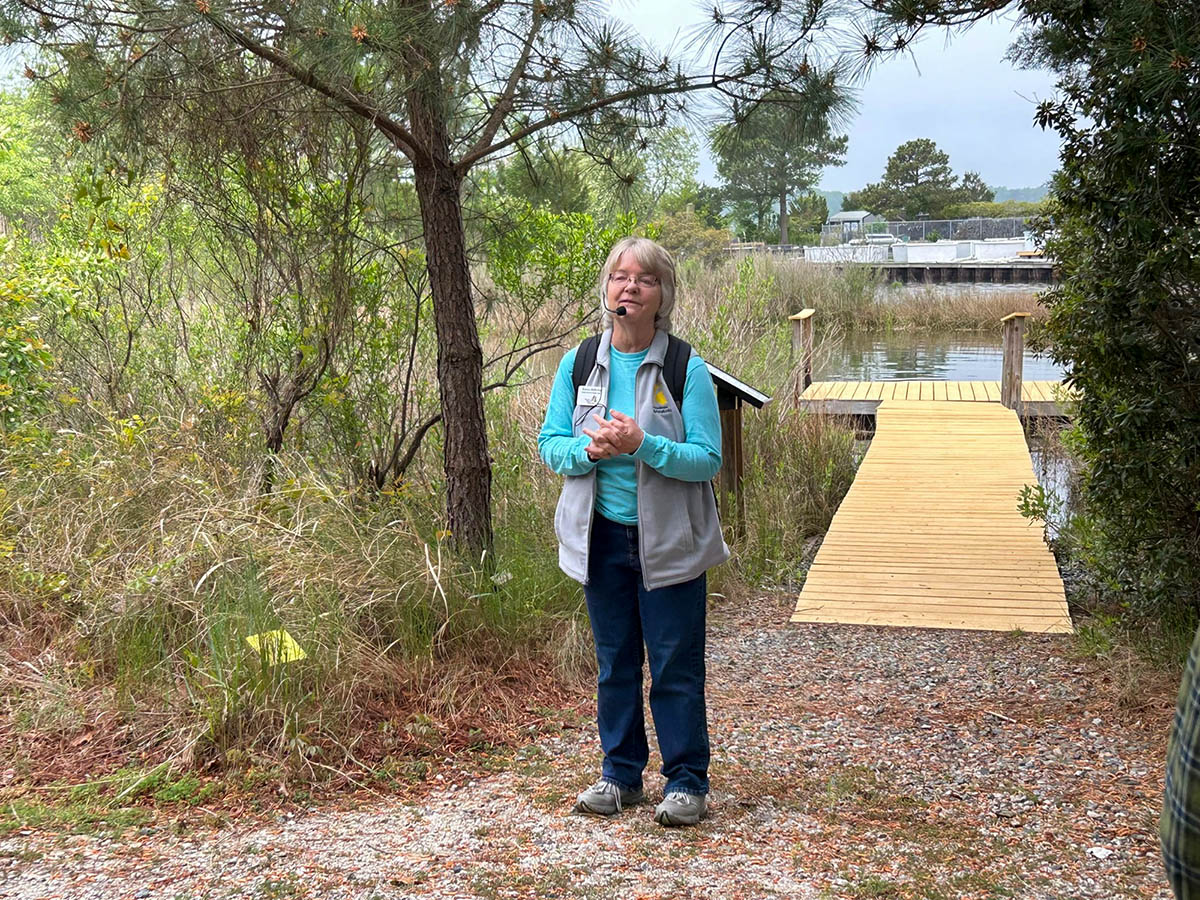 Some of the biggest changes to the marsh over the past 25 years have resulted from steady sea level rise, but it has also endured its share of extreme weather. In 2003, Hurricane Isabel flooded the marsh with over eight feet of water.
Some of the biggest changes to the marsh over the past 25 years have resulted from steady sea level rise, but it has also endured its share of extreme weather. In 2003, Hurricane Isabel flooded the marsh with over eight feet of water.
“It wiped out our attempt at a tidal freshwater demonstration pond,” said Duhring. “Today, both ponds at the marsh are fully tidal.”
Yet the marsh has proven resilient, and it has even incorporated innovative additions. In 2007, an intertidal oyster reef was added using recycled shells from local restaurants through a partnership with the Chesapeake Bay Foundation.
“While the reef suffers from sedimentation and raccoon predation, it remains a useful teaching tool,” said Duhring. “We use it to show the difference between healthy, structured reefs and ones that become smothered by sediment that washes off the land into the river.”
In 2018, a grant from William & Mary’s Green Fee program funded a new floating pier for year-round access and an “amphibious shed” that rises with floodwaters. Recently, a thermal camera was added that streams footage of wildlife and marsh temperature conditions.
However, education remains the marsh’s core mission. It has hosted professional development workshops, Virginia Master Naturalist trainings, public tours, Marine Science Day participants, K–12 school programs and even visiting science illustrators.
“One of my favorite memories was when a group of science illustrators visited as part of a conference,” recalled Duhring. “A snail happened to crawl across one of the artist’s drawings and she worked the snail’s trail into the picture, labeled it and gave it to me—I thought it was so cool that she was able to connect art and science like that.”
As the marsh’s primary caretaker for the last 25 years, Duhring’s biggest takeaway is the importance of wetland stewardship in a changing world. She emphasizes the codependence that exists between salt marshes and coastal citizens and our shared responsibility to manage these vital ecological resources.
“Wetlands need people to speak up for them,” said Duhring. “My greatest hope is that someone steps in when I step away—to keep watch, care for the marsh and share its story with the next generation.”
Celebrate, support and reflect
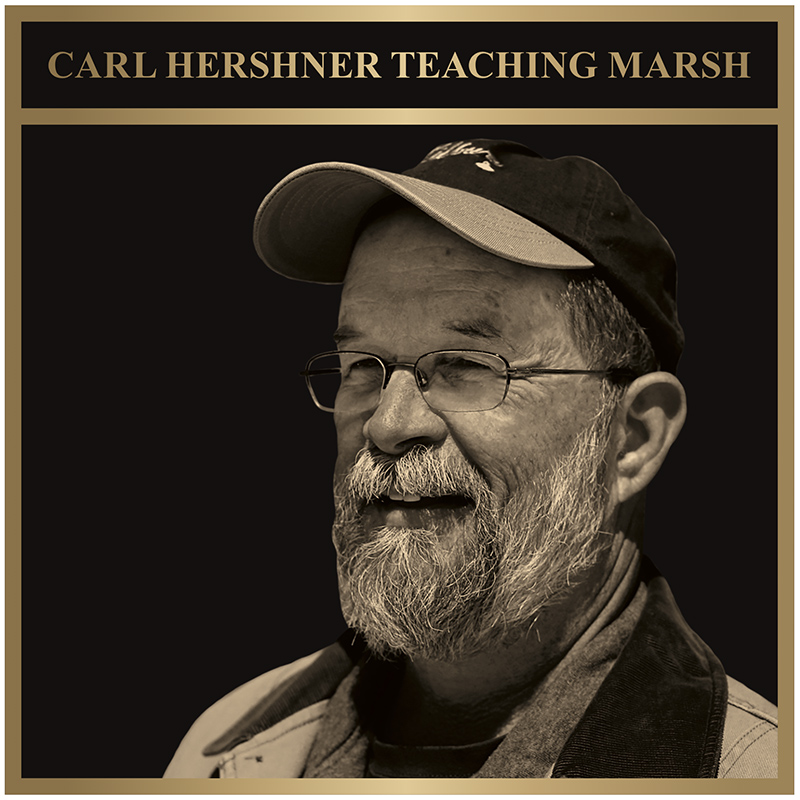 On August 21, Duhring will reflect on the past, present and future of the Teaching Marsh in her lecture titled “Celebrating 25 Years of the VIMS Teaching Marsh.”
On August 21, Duhring will reflect on the past, present and future of the Teaching Marsh in her lecture titled “Celebrating 25 Years of the VIMS Teaching Marsh.”
“I hope people leave with a better understanding of what wetlands do for us, and how we can return the favor by protecting and restoring them,” said Duhring.
Those inspired by the marsh’s mission can contribute to its future through the Carl Hershner Teaching Marsh Fund (4778), which was established to support its ongoing maintenance and educational use.


